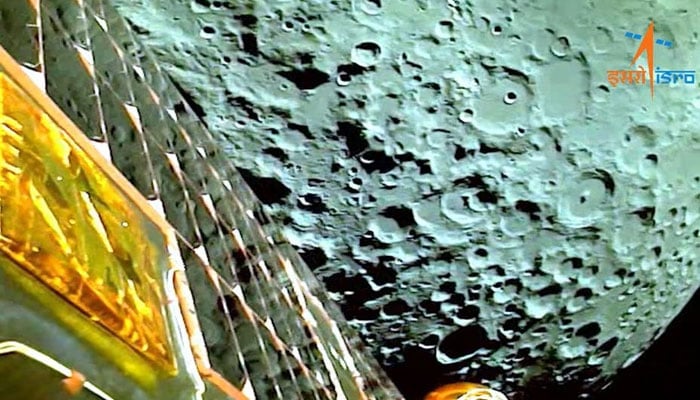Has Chandrayaan-3 landing site on lunar south pole finally been named?
The landing spot has been given names from the Sanskrit, that have roots in Hindu mythology
August 30, 2023

The lunar south pole, where India's Chandrayaan-3 spacecraft made a historic landing last week, has been named as "Shiv Shakti Point," according to the Indian Space Research Organisation (ISRO).
During a visit to the space agency in Bengaluru on Saturday, August 26, Indian Prime Minister Narendra Modi submitted names for the lunar south pole landing site, according to ISRO Chairman, S Somanath, in a video message.
Sanskrit words, "Shiv" and "Shakti" mean "Shiva" and "power," respectively, and have roots in Hindu mythology. Shiva is the greatest god in Hinduism, and Shakti in this context alludes to the tenacity of female scientists among other things, according to Modi.
In addition, PM Modi also suggested the name, "Tiranga Point", for the lunar area where Chandrayaan-2's Vikram lander crashed in 2019. "Tiranga," another Sanskrit word that means "three colours," is a slang term for the tricolour flag of India.
Modi said: "This will be an inspiration for every effort made by India. It will remind us that any failure is not final."
However, these names are not official as the International Astronomical Union (IAU), a body with its headquarters in Paris that assigns official names to celestial bodies and their features, has not yet authorised these names.
It was unclear if ISRO had previously given the IAU the announced names.
Moreover, the Chandrayaan-3 surface mission's robotic lander and rover, Vikram and Pragyan, have been utilising their two-week stay on the moon to conduct an onboard payload called Chandra's Surface Thermophysical Experiment (or ChaSTE), marking the first time such an experiment has been conducted on our celestial neighbour, Space.com reported.
The ISRO reported that Pragyan, the rover exploring its new home, had been rerouted after encountering a potentially dangerous crater.
Furthermore, since Chandrayaan-3's soft landing on the lunar surface, it has found elements on the moon including Aluminum (Al), sulphur (S), calcium (Ca), iron (Fe), chromium (Cr), titanium (Ti), manganese (Mn), silicon (Si), and oxygen (O).
The results are important because Chandrayaan 3 will advance in its hunt for water on the moon if it successfully discovers the hydrogen it is looking for.









